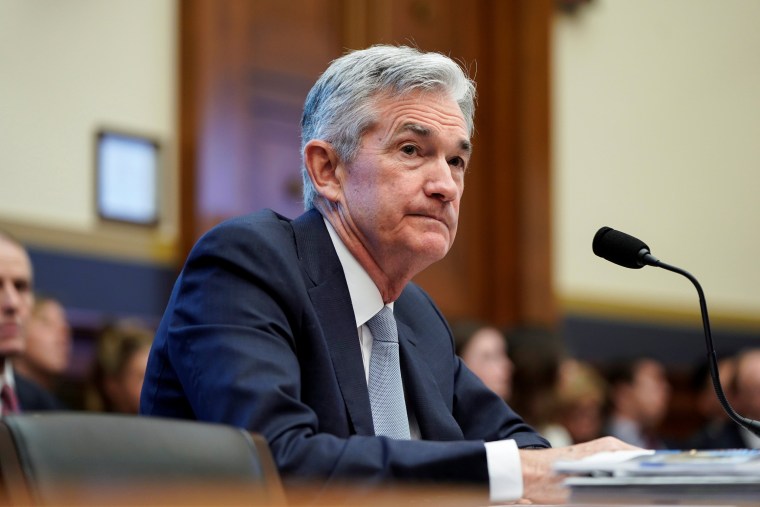Federal Reserve Chairman Jerome Powell said the central bank is watching current economic developments and will do what it must to keep the near-record expansion going.
Financial markets have been nervous lately over an escalating trade war that has spread from China and now could include Mexico. At the same, government bond yields are behaving in a way that in the past has been a reliable recession indicator.
Powell began a speech Tuesday in Chicago by addressing “recent developments involving trade negotiations and other matters.”
“We do not know how or when these issues will be resolved,” he said in prepared remarks. “We are closely monitoring the implications of these developments for the U.S. economic outlook and, as always, we will act as appropriate to sustain the expansion, with a strong labor market and inflation near our symmetric 2 percent objective.”
Powell’s comments came at the “Conference on Monetary Strategy, Tools and Communications Practices,” a kickoff for an examination the Fed is conducting this year about the tools it has to meet its goals as well as the way it is communicating its actions to the public.
Wall Street is expecting the Fed to cut its benchmark rate twice before the end of the year in response to current conditions.
He did not address any other specific issues relating to current conditions. Markets are broadly expecting the policymaking Federal Open Market Committee to cut its benchmark rate twice before the end of the year in response to current conditions.
For his part, Powell has stuck to the position that the Fed remains data dependent. The most recent FOMC statement, from its May meeting, indicated that the committee is taking a patient stance toward policy changes at conditions evolve.
In his speech Tuesday, Powell outlined the challenges the Fed faces ahead for when the next crisis hits. The current low rate environment leaves the Fed little room before it hits the zero lower bound, or the point where the Fed’s nominal benchmark rate can’t be lowered much more.
“In short, the proximity of interest rates to the ELB has become the preeminent monetary policy challenge of our time, tainting all manner of issues with ELB risk and imbuing many old challenges with greater significance,” he said.
The Fed faces a problem with inflation, which has yet to sustain at the central bank’s 2 percent goal. Powell said persistently low inflation could lead to “a difficult-to-arrest downward drift” in expectations.
At issue for the future are three main considerations: where current policy is enough to address inflation misses; if the Fed’s toolkit of rate moves and asset purchases is enough to achieve the dual mandate of full employment and price stability, and how best to communicate policy to the public.
One consideration is whether the “dot plot” of individual FOMC members’ rate projections is helping. Powell suggested that during times of stress, the closely followed “median dot” actually could become the “least likely outcome.”
Powell said the tools used during the crisis — near-zero rates and asset purchases that took the balance sheet to more than $4.5 trillion — are likely to be deployed again.
“Perhaps it is time to retire the term ‘unconventional’ when referring to tools that were used in the crisis. We know that tools like these are likely to be needed in some form in future ELB spells, which we hope will be rare,” he said.
